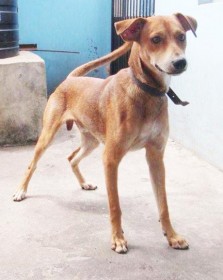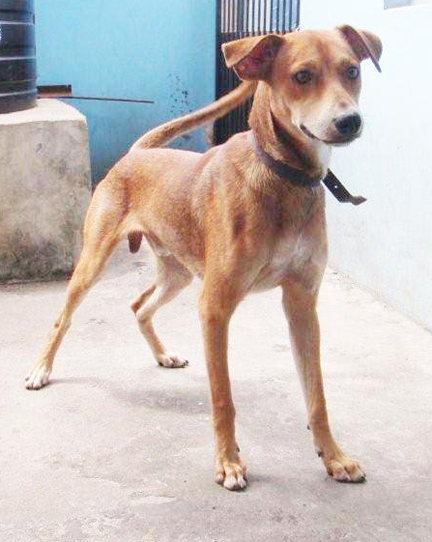Continued
Periodontitis
I read somewhere that the most common disease in humans is periodontitis. The layman loosely equates periodontitis with ‘tooth decay.’ But as we will see, tooth decay is a much more all-encompassing term and can be the result of dental caries, abscesses in the tooth roots, etc.
 In dogs also, periodontitis must be the most prevalent disease in the mouth. Teeth are held in place by a special substance called dental cement and by a very specialized connective tissue called the periodontal membrane. It is the infection of this membrane that leads to periodontitis.
In dogs also, periodontitis must be the most prevalent disease in the mouth. Teeth are held in place by a special substance called dental cement and by a very specialized connective tissue called the periodontal membrane. It is the infection of this membrane that leads to periodontitis.
Causes
Usually, this infection of the periodontitis membrane stems from an original gingivitis (see October 4, 2009). You may recall us saying that gingivitis (sore gums) itself is primarily the result of a build up of plaque on the tooth. (We had also documented that when food is trapped in crevices between the teeth, bacteria can flourish.) These plaque (calculus, tartar) deposits can actually create a physical irritation. The gums become soft and begin to recede, the teeth become more exposed and start to loosen. Periodontal and root infections follow.

There are other causes of periodontitis. Let’s look at some of them:
(i) If a dog, because of an incorrect diet, does not get the opportunity to chew solids or gnaw at a bone, this lack of exercise predisposes to infection. I’ve got to share this sentence from a veterinary reference book with you. It portrays exactly what was said in the first statement. It goes like this: “Lack of masticatory exercise causes functional insufficiency of the jaws and may contribute to periodontal disturbance and subsequent disease.” I like that. You see, vets like lawyers, have their own language too, and we love to make simple concepts very difficult by using fancy technical terms which should show off our erudition.
(ii) Loss of teeth. If, for example, some of the larger back teeth (molars, even premolars) are lost, then the teeth on the opposite jaw have no antagonist (ie, no physical opposition). The supporting tissues then waste away (atrophy). Also food impaction, with the concomitant bacterial invasion, takes place.
(iii) Diseases such as diabetes, hypocalcaemia (too little calcium in the blood), hyperparathyroidism (impairing the formation of new bone especially in young dogs), chronic nephritis (kidney failure) may act as secondary factors that result in periodontal disease.
(iv) Certain breeds especially those with short faces (eg the Pekinese), are predisposed to periodontitis because of malocclusion of the jaws (the jaws and teeth not fitting snugly together) (see November 1, 2009). This irregularity in the position of the teeth leads to food particles being retained between and around the teeth. Also, because of the anatomy of these short-faced dogs breathing through the nostrils is difficult. The dogs tend to breathe through their mouths. The fact that they have elongated soft palates exacerbates the mouth breathing which could bring in more bacteria (infection) into the mouth and gums.
Symptoms
I should mention that (clinical) signs of the ailment may not be immediately apparent until the condition is extremely severe. However, early in the disease, probing and pressing the affected area (teeth) could elicit pain. As the condition progresses, even slight pressure on the tooth/gums in the infected area could cause small amounts of pus to exude from infected pockets around the tooth.
Other symptoms are: bad breath (halitosis); inflamed gums (gingivitis); bleeding of the gums; visible, hard-to-dislodge plaque on the teeth; loose teeth, etc.
So, now we know the causes and the signs of the ailment. Next week, we’ll deal with the symptoms and the treatment of periodontitis.
Please implement disease preventative measures (vaccinations, routine dewormings, monthly anti-heartworm medication, etc) and adopt-a-pet from the GSPCA’s Animal Clinic and Shelter at Robb Street and Orange Walk, if you have the wherewithal to care well for the animals. Do not stray your unwanted pets, take them to the GSPCA’s Clinic and Shelter instead. If you do not wish your pet to have puppies or kittens, you may exploit the GSPCA’s free spay and neutering programme. If you see anyone being cruel to an animal, or if you need any technical information, please get in touch with the Clinic and Shelter by calling 226-4237.

